Acaulospora gedanensis is a species of fungus in the family Acaulosporaceae. It forms arbuscular mycorrhiza and vesicles in roots. Found in Poland growing under Festuca ovina, it was described as a new species in 1988.
Acaulospora thomii is a species of fungus in the family Acaulosporaceae. It forms arbuscular mycorrhiza and vesicles in roots. Found in Poland growing under Triticum aestivum, it was described as a new species in 1988.
Kari Korhonen is a Finnish mycologist and forest pathologist, known for his studies of fungi causing root rot.
Inocybe salicis is an uncommon species of fungus found in association with willow in Europe. The species produces small, brown or yellow mushrooms with caps up to 2.5 centimetres (1.0 in) across, with stems up to 3.5 centimetres (1.4 in) long. The species is similar in appearance to several other closely related species in the genus Inocybe that also associate with willow, and so is most reliably differentiated microscopically.
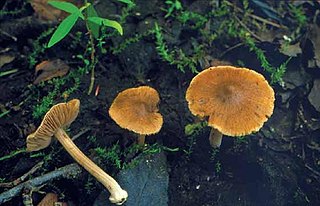
Inocybe saliceticola is a fungus found in moist habitats in the Nordic countries. The species produces brown mushrooms with caps of varying shapes up to 40 millimetres (1.6 in) across, and tall, thin stems up to 62 mm (2.4 in) long. At the base of the stem is a large and well-defined "bulb". The species produces unusually shaped, irregular spores, each with a few thick protrusions. This feature helps differentiate it from other species that would otherwise be similar in appearance and habit.
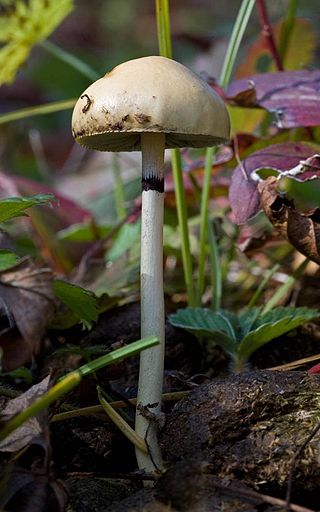
Protostropharia alcis is a species of coprophilous agaric fungus in the family Strophariaceae. The fungus produces fruit bodies on moose, elk, and deer dung. The species has been recorded in Europe, Canada and Brazil.
Clitocybe strigosa is a species of agaric fungus in the family Tricholomataceae. Found in northern Europe, it was described as new to science in 1969 by Finnish mycologist Harri Harmaja.
Clitocybe menthiodora is a species of agaric fungus in the family Tricholomataceae. Found in northern Europe, it was described as new to science in 1969 by Finnish mycologist Harri Harmaja. Dry fruitbodies have an odour similar to menthol, a feature for which the fungus is named.
Clitocybe lohjaensis is a species of agaric fungus in the family Tricholomataceae. Found in northern Europe, it was described as new to science in 1969 by Finnish mycologist Harri Harmaja. Lohja, for which the species is named, is a town in southern Finland.
Clitocybe globispora is a species of agaric fungus in the family Tricholomataceae. Found in northern Europe, it was described as new to science in 1969 by Finnish mycologist Harri Harmaja.
Clitocybe fennica is a species of agaric fungus in the family Tricholomataceae. Found in northern Europe, it was given the Neo-Latin epithet specifying "Finnish" when it was described as new to science in 1969 by Finnish mycologist Harri Harmaja.

Clitocybe agrestis is a species of agaric fungus in the family Tricholomataceae. Widely distributed in Europe it was described as new to science in 1969 by Finnish mycologist Harri Harmaja. Fruitbodies are poisonous as they contain the toxin muscarine.
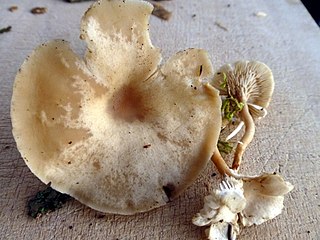
Clitocybe marginella is a species of agaric fungus in the family Tricholomataceae. Found in northern Europe, it was described as new to science in 1969 by Finnish mycologist Harri Harmaja.
Clitocybe ruderalis is a species of agaric fungus in the family Tricholomataceae. Found in northern Europe, it was described as new to science in 1969 by Finnish mycologist Harri Harmaja.
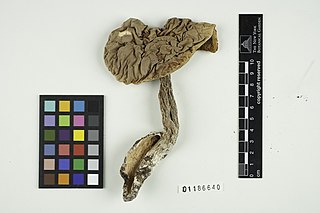
Boletus pinetorum is an edible bolete fungus generally found in Fennoscandia. It was described as a new species in 2009 from a collection made in Finland. It resembles the popular Boletus edulis but is distinct from that species genetically. Fruitbodies of B. pinetorum have greyish brown caps with wrinkled margins. The bolete is mycorrhizal with pines, and grows in dry sandy pine heaths and dry coniferous forests.
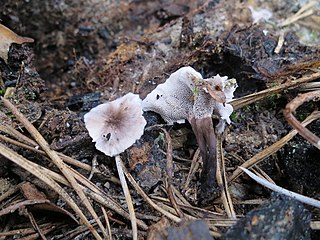
Phellodon secretus is a rare species of tooth fungus in the family Bankeraceae. Described as new to science in 2003, it is found in Finland, where it grows under the fallen trunks of pine trees. It somewhat resembles Phellodon connatus, but has a thinner stipe, a softer, cotton-like cap, and smaller, rounder spores.
Skeletocutis brevispora is a species of poroid crust fungus in the family Polyporaceae. It was described as new to science in 1998 by Finnish mycologist Tuomo Niemelä.
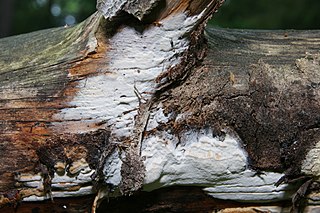
Flavidoporia pulvinascens is a species of crust fungus that is found in Europe. Czech mycologist Albert Pilát originally described the fungus in 1953 as a species of Poria.
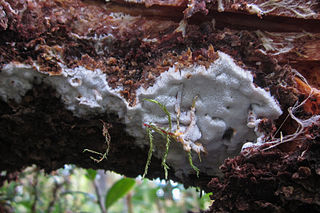
Skeletocutis kuehneri is a species of poroid crust fungus in the family Polyporaceae. It was described as new to science by Alix David in 1982. The holotype was collected in France, where it was found growing on pine. It has been recorded from Norway, Finland, and Sweden, although it is rare in the Nordic countries. The fungus is a successor species, and prefers growing on pine that has been previously degraded by Trichaptum fungi, particularly T. abietinum.

Diplomitoporus flavescens is a species of poroid crust fungus in the family Polyporaceae.










